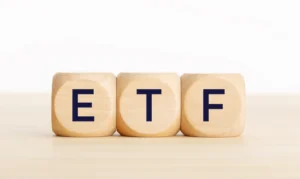In 2025, ETFs for day trading have taken center stage in financial markets, offering traders the perfect blend of speed, liquidity, and diversification. These exchange-traded funds allow instant access to entire sectors, commodities, or indices, eliminating the risk of single-stock concentration. With global trading volumes at record highs, ETFs have become the preferred instrument for both beginners and professional traders looking to capitalize on intraday opportunities.
The best ETFs for active traders share a few critical traits—tight spreads, high volume, and consistent volatility. Unlike individual stocks, ETFs move more predictably, responding to macroeconomic events and sector rotations. This makes them ideal for strategy-driven trading such as breakout plays, momentum setups, and mean reversion.
High Liquidity ETFs 2025 have shown exceptional performance, helping traders react faster to economic data releases, central bank announcements, or corporate earnings. These ETFs have become the backbone of modern portfolios where speed, precision, and risk management define success.
This article explores the top 10 ETFs for day trading, combining in-depth analysis, real examples, and insights into how each ETF behaves in volatile conditions. Whether you’re trading from New York, London, or Mumbai, these ETFs can transform your approach to short-term investing by offering flexibility, transparency, and execution speed.
1. SPDR S&P 500 ETF (SPY)
The SPDR S&P 500 ETF, or SPY, remains the ultimate foundation for all ETFs for day trading. The SPDR S&P 500 ETF (SPY) mirrors the S&P 500 Index and serves as a vital component of the U.S. equity markets. With an average daily trading volume above 70 million shares, it is the most liquid ETF globally. This liquidity ensures quick execution, tight spreads, and predictable intraday behavior—ideal for traders who rely on speed and consistency.
Why SPY remains every day trader’s core instrument:
- Exceptional liquidity and execution reliability: SPY allows instant entries and exits without significant price impact. Traders using short-term scalping or momentum strategies depend on it for smooth trade flow, even during market surges or sell-offs.
- Predictable structure and macro sensitivity: SPY responds immediately to data releases such as CPI, employment reports, or Fed announcements, allowing traders to trade the day’s direction early with confidence.
- Perfect volatility balance for multiple strategies: Its moderate movement makes it versatile for scalping, breakout continuation, or mean reversion setups. Traders can control risk while maintaining frequent trading opportunities.
- Market barometer for correlation trading: SPY often dictates sentiment for other ETFs and stock sectors. When SPY trends, related ETFs follow—helping traders confirm positions in instruments like QQQ or XLF.
Example: On February 14, 2025, SPY surged 1.3% within one hour after lower inflation data, giving traders clean entries around VWAP and confirming bullish sentiment. SPY continues to lead the High Liquidity ETFs 2025 category as the benchmark for intraday trading with ETFs.
2. Invesco QQQ Trust (QQQ)
The Invesco QQQ Trust, or QQQ, is among the most active and volatile ETFs for short-term trading. Tracking the Nasdaq-100 Index, QQQ reflects the movements of tech leaders like Apple, Microsoft, and Nvidia. Its rapid pace and strong correlation with innovation trends make it perfect for traders who thrive on momentum and price acceleration.
Why QQQ is a top choice among active traders:
- Technology-driven volatility that fuels opportunity: Tech earnings, AI breakthroughs, or product launches cause sharp movements. Traders can exploit these high-energy moments for quick profits.
- High liquidity and tight spreads for execution speed: With over 50 million shares traded daily, QQQ ensures instant trade fills, making it ideal for intraday entries and exits.
- Trend-following and breakout-friendly behavior: During sustained rallies, QQQ’s momentum provides multiple entry opportunities for short-term continuation setups.
- Strong market sentiment indicator: When QQQ outperforms SPY, it signals a “risk-on” mood—showing traders where capital is flowing within equities.
Example: After Nvidia’s strong earnings in early 2025, QQQ jumped 2.7% intraday, giving traders early breakout signals across the tech sector. As one of the best ETFs for active traders, QQQ offers unmatched speed, volume, and momentum opportunities for intraday setups.
3. iShares Russell 2000 ETF (IWM)
The iShares Russell 2000 ETF (IWM) offers exposure to small-cap U.S. companies and is a favorite among traders seeking higher volatility. As small caps react faster to domestic economic data and interest rate changes, IWM often leads in movement when major indices like SPY slow down.
Why IWM is ideal for intraday traders:
- High beta and volatility for strong movement: IWM’s smaller-cap composition allows bigger percentage swings, attracting breakout traders and scalpers.
- Direct link to U.S. economic health: IWM reacts sharply to GDP reports, PMI data, and growth indicators, giving early signals about market optimism or caution.
- Reliable liquidity with deep order books: With over 30 million shares traded daily, traders enjoy consistent fills and stable spreads.
- Frequent reversals and range setups: IWM often forms clean support and resistance zones that favor mean-reversion strategies, making it versatile for both aggressive and conservative traders.
Example: In March 2025, after strong U.S. manufacturing data, IWM rallied 2.5% intraday, confirming small-cap leadership. As part of the High Liquidity ETFs 2025, IWM combines movement, liquidity, and clarity for profitable intraday setups.
4. Vanguard S&P 500 ETF (VOO)
VOO mirrors the S&P 500 Index like SPY but comes with lower fees and slightly lower daily volume. It’s ideal for traders and funds that value stability, structure, and efficient execution without unnecessary cost drag.
Why VOO deserves a spot in active trading portfolios:
- Low-cost efficiency for consistent performance: VOO’s low expense ratio appeals to frequent traders who prioritize cost-effective execution.
- Institutional-grade reliability and steady behavior: It’s widely used by funds for hedging and short-term rebalancing, ensuring steady liquidity.
- Correlates closely with SPY: Many traders use VOO alongside SPY to confirm overall market direction before entering trades.
- Smooth intraday price action: Its moderate volatility makes it suitable for disciplined traders seeking controlled exposure during less active sessions.
Example: During a quiet trading week in early 2025, VOO maintained volume consistency and allowed scalpers to trade short bursts of volatility. Among the best ETFs for active traders, VOO stands out for dependability and affordability.
5. SPDR Gold Shares (GLD)
GLD offers access to gold price movements, providing traders with exposure beyond equities. It performs best when risk sentiment shifts or inflation data triggers moves in commodities and currencies.
Why GLD is an essential ETF for diversification:
- Safe-haven performance during uncertainty: GLD tends to rise when stocks fall, offering intraday hedging opportunities against market turbulence.
- High liquidity for a commodity-based ETF: With daily volume around 20 million shares, GLD provides smooth entries even during volatile sessions.
- Macro-driven volatility that supports quick profits: GLD responds to shifts in interest rates, central bank policies, and geopolitical tensions—offering consistent movement for traders.
- Technical reliability for chart-based strategies: GLD forms clear support and resistance zones, ideal for price action and trend-based trading.
Example: When inflation data spiked in April 2025, GLD rose 1.8% intraday as traders moved capital from equities into gold. For those focusing on volatile ETFs for short-term trading, GLD offers both security and movement.
6. ProShares UltraPro QQQ (TQQQ)
TQQQ gives traders three times the daily return of QQQ, making it one of the most aggressive ETFs for day trading.Advanced traders, who can handle leveraged volatility with precise execution and tight risk control, prefer it.
Why TQQQ attracts professional short-term traders:
- 3× leverage that multiplies opportunity and risk: Every 1% move in QQQ equals nearly 3% in TQQQ, creating amplified short-term profits during momentum phases.
- Extremely high trading volume and liquidity: With over 100 million shares traded daily, TQQQ supports seamless execution at any scale.
- Perfect for high-momentum environments: Tech rallies, earnings surprises, and AI headlines often cause sharp directional moves ideal for short-term trend plays.
- Data-backed precision with tight stop management: Professionals rely on TQQQ for rapid setups, using small position sizes to balance risk.
Example: In February 2025, TQQQ surged 5.4% intraday during a tech rally, rewarding traders who caught the wave early. It remains a leader among high liquidity ETFs in 2025 for those skilled at managing volatility.
7. Direxion Daily S&P 500 Bull 3X Shares (SPXL)
SPXL delivers three times the daily performance of the S&P 500, offering leveraged access without using futures. It’s one of the most popular instruments for capturing short-term moves in large-cap indices.
Why SPXL suits fast-moving markets:
- Leverage that enhances directional exposure: SPXL magnifies the S&P 500’s moves by 3×, allowing traders to capture strong rallies with limited capital.
- High liquidity and quick reversals: With millions of shares traded daily, traders can switch bias instantly based on intraday momentum.
- Alignment with institutional flows: Hedge funds use SPXL to position ahead of policy shifts, making it highly reactive to economic news.
- Ideal for breakout and reversion setups: SPXL’s movement creates multiple opportunities for aggressive traders using tight stops and disciplined execution.
Example: On March 2025’s Fed announcement day, SPXL spiked 4.7% intraday after dovish comments, giving leveraged traders outsized returns. It’s one of the most efficient volatile ETFs for short-term trading in trending sessions.
8. iShares MSCI Emerging Markets ETF (EEM)
EEM provides access to developing markets like China, India, and Brazil. It reflects global growth sentiment and commodity-driven cycles, giving traders exposure to international volatility.
Why EEM stands out in global trading:
- Macro volatility linked to global trends: EEM reacts to oil prices, trade data, and currency shifts, offering constant intraday movement.
- Nearly 24-hour relevance: Its exposure to Asian and European markets means traders can anticipate moves before the U.S. open.
- Reliable liquidity for global themes: With around 40 million shares traded daily, EEM maintains consistent depth for large orders.
- Diversified exposure for flexible strategies: It blends tech, energy, and manufacturing sectors, allowing traders to profit from multiple market catalysts.
Example: When oil prices surged in June 2025, EEM climbed 2.4% intraday, showing how commodities influence emerging markets. Among High Liquidity ETFs 2025, EEM connects domestic traders to global momentum.
9. VanEck Semiconductor ETF (SMH)
SMH focuses on the semiconductor sector, home to companies like Nvidia, TSMC, and AMD. It’s among the most volatile ETFs for short-term trading, reflecting how innovation directly impacts global markets.
Why SMH dominates tech-based trading strategies:
- Fast reactions to tech innovation: SMH responds immediately to AI, chip production, and hardware news, making it highly reactive and rewarding.
- Strong institutional participation ensures liquidity: Daily volumes exceed 10 million shares, keeping price action smooth for active traders.
- Correlates with QQQ for trend confirmation: When both rise together, traders get clear signals about tech sector strength.
- Perfect for momentum and volatility plays: SMH often posts 2–3% daily swings, supporting intraday breakout and reversal setups.
Example: In May 2025, SMH soared 3.6% intraday after AI hardware announcements, reinforcing its reputation for high-energy trading opportunities. It remains a vital part of the Best ETFs for Active Traders group.
10. Financial Select Sector SPDR Fund (XLF)
XLF tracks leading U.S. financial institutions like JPMorgan, Bank of America, and Goldman Sachs. It reflects investor sentiment around credit growth, interest rates, and economic stability.
Why XLF remains a critical ETF in 2025:
- Direct sensitivity to rate policies: XLF reacts instantly to Fed rate decisions, offering sharp tradable volatility during policy meetings.
- Liquidity that rivals index ETFs: With 30+ million shares traded daily, XLF enables high-volume day trading with ease.
- Sector correlation with SPY and QQQ: Traders use XLF to gauge risk appetite by comparing financials to broader market movements.
- Strong event-driven setups: Banking earnings and regulatory updates produce predictable intraday trends and reversals.
Example: When the Fed hinted at a rate cut in July 2025, XLF jumped 2% within an hour as loan-growth optimism spread. It continues to rank among the high liquidity ETFs of 2025, anchoring portfolios that respond to economic shifts.
Practical Tips for Day Trading ETFs
Successful intraday trading with ETFs requires focus, structure, and the ability to make quick yet calculated decisions. The ETF market moves fast, often reacting instantly to macroeconomic data, institutional flows, or global sentiment. Traders who combine discipline with preparation can consistently take advantage of this pace without succumbing to emotional or impulsive trades.
One of the most effective habits is trading during peak volume periods. The first 90 minutes after the U.S. market opens and the final hour before it closes typically provide the highest liquidity and cleanest price action. These hours reduce slippage and improve execution, especially in high-volume instruments like SPY or QQQ. Trading outside these periods may lead to erratic moves and wider spreads, which can erode profits.
Equally important is maintaining focus on a small watchlist. Traders who specialise in two or three ETFs tend to outperform those constantly switching assets. Familiarity with price rhythm, sector correlations, and historical reactions to news creates an edge in timing and confidence. For instance, knowing how SPY behaves after economic releases or how GLD reacts to interest rate expectations helps refine entries and exits.
Correlation awareness is another core principle. ETFs like SPY, QQQ, GLD, and XLF often move in related patterns, reflecting overall market sentiment. By analyzing these interconnections, traders can confirm trends or detect reversals early.
Stop-loss automation is critical in volatile ETFs for short-term trading, where reversals can be abrupt. Setting predefined exit points limits losses and protects profits during sudden momentum shifts.
Finally, staying aligned with global economic calendars ensures preparation before key events such as GDP announcements, earnings seasons, or inflation data releases. These catalysts frequently drive large intraday moves.
When applied consistently, these strategies make ETFs for day trading more structured, efficient, and emotionally balanced, helping traders achieve steady performance in all market conditions.
Why do ETFs dominate day trading in 2025?
In 2025, ETFs for day trading have become the preferred choice for traders seeking rapid execution, market flexibility, and efficient risk control. These instruments combine diversification, transparency, and liquidity—qualities that fit perfectly into today’s technology-driven trading environment. Unlike individual stocks, ETFs allow traders to switch instantly between sectors, commodities, and indices without dealing with complex contracts or high transaction costs.
Their dominance comes from adaptability. Whether the market is trending upward, facing corrections, or moving sideways, ETFs remain relevant. In bullish conditions, they help traders capture momentum across broad indices like the S&P 500 or tech-heavy funds like QQQ. During downturns, defensive ETFs or inverse structures allow quick hedging and profit potential. Even in flat sessions, high-volume ETFs support scalping strategies through minor fluctuations.
Global accessibility also strengthens their lead. ETFs trade actively across exchanges in Asia, Europe, and the U.S., providing nearly continuous opportunities. Traders can position themselves before or after major economic events, leveraging different time zones for extended activity.
Technology further boosts their appeal. AI-based platforms, real-time data visualization, and automated strategies now identify ETF setups faster than ever. This blend of speed and insight keeps ETFs for day trading at the center of modern financial activity.
By combining global reach, adaptability, and built-in diversification, ETFs have reshaped intraday trading. They stand as the ultimate bridge between strategy, speed, and intelligent market participation in 2025—helping both professionals and retail traders thrive in fast-moving markets.
Conclusion
The best ETFs for active traders share one essential feature—reliability. From SPY’s liquidity to TQQQ’s velocity, each ETF on this list provides a powerful tool for traders who want precision and flexibility.
In 2025, intraday trading revolves around adaptability. Whether following macro trends or sector momentum, ETFs offer unmatched efficiency for executing fast, informed trades.
Success with volatile ETFs for short-term trading comes from structure and self-control. The best traders master a few ETFs, understand their movement cycles, and build strategies around them rather than chasing every swing.
As global markets continue to evolve, ETFs remain the ultimate bridge between professional and retail trading worlds. With liquidity, diversification, and technology on your side, these instruments make profitable day trading more achievable than ever before.
Frequently Asked Questions (FAQ)
Q1. Why are ETFs better for day trading than individual stocks?
They offer instant diversification, consistent liquidity, and lower risk from unexpected company-specific news.
Q2. Which ETFs suit beginners in 2025?
SPY, VOO, and IWM are excellent starting points due to their smooth movement and deep liquidity.
Q3. How can I manage risk when trading leveraged ETFs like TQQQ or SPXL?
Use strict position sizing and preset stop-losses, and never hold leveraged ETFs overnight.
Q4. What’s the ideal time to trade ETFs?
The best trading windows are the first 90 minutes and the final hour of the market session, when volatility and liquidity peak.
Q5. Do ETFs work for global traders?
Yes. Instruments like EEM and GLD offer access to global markets, commodities, and currencies—all tradable via U.S. exchanges.
Q6. Which technical tools work best for ETFs?
Volume Profile, VWAP, MACD, and Bollinger Bands help identify key intraday zones and reversals.
Q7. Are ETFs profitable for short-term traders?
Yes—when traded with discipline, ETFs offer stable opportunities. The High Liquidity ETFs 2025 enable consistent entries and exits backed by reliable volume.
Read here to learn more about “What Is Gamma in Investing and What Beginners Should Know“

I’m Chaitali Sethi — a seasoned financial writer and strategist specializing in Forex trading, market behavior, and trader psychology. With a deep understanding of global markets and economic trends, I simplify complex financial concepts into clear, actionable insights that empower traders at every level. Whether it’s dissecting winning strategies, breaking down market sentiment, or helping traders build the right mindset, my content bridges the gap between information and implementation.




